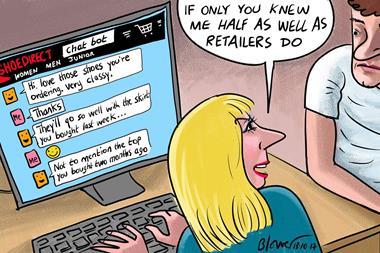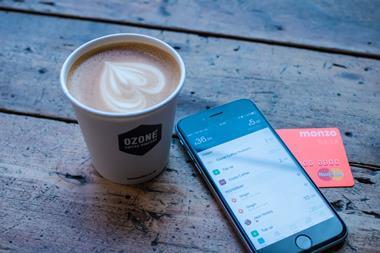Personalisation engines are enabling retailers to dive deeper into customer behaviour, as Gregory Gazagne, executive vice-president at Criteo, EMEA, explains.
Personalisation has always been important in retail.
Last century, a local shopkeeper knowing your name or suggesting a new item you might like to try gave shop keepers a competitive edge and improved customer loyalty.
Fast forward to today and personalisation remains as important as ever, but the way it’s delivered is constantly evolving.
Customers now have the option to browse their favourite stores online, at their convenience, across multiple devices, instead of taking a trip to their nearest high street.
Retailers have had to adapt to this change in consumer habits, to ensure that they maintain a connection with customers both online and in store.
As commerce shifted online, basic customer segmentation was the initial focus of personalisation, but it was a blunt instrument – too often offering irrelevant recommendations.
Blunt segmentation to true personalisation
The evolution of technology has facilitated a much more in-depth insight, driven by machine and real-time learning: the personalisation engine.
Personalisation engines used to recognise customer intent will enable digital businesses to increase their profits up to 15%
A personalisation engine acts as every customer’s favourite local shopkeeper across the multiple touchpoints of the modern shopping journey.
It identifies the optimum experience for an individual, based on what is known about the customer.
It can tailor the experience in real time, help anticipate consumer demands and behaviours, alter the online presentation layer or trigger a useful suggestion.
By 2020, Gartner predicts that personalisation engines used to recognise customer intent will enable digital businesses to increase their profits up to 15%.
This means more page views and clicks per page, as well as decreased bounce rates, both of which individually drive profit.
With higher engagement, there are more customer acquisitions, higher margins and fewer returns.

Fuelling the engine
The driver of a personalisation engine is data – it creates a customer profile on an individual’s personal data, as well as the behavioural data of both the customer and similar individuals.
It can tell a retailer a customer’s preferences, what they’ve purchased and what they’ve been browsing, allowing retailers to fully understand their customer.
This gigantic volume of data can be overwhelming, and for many extracting the important information is a real challenge.
The personalisation engine ensures that this data is managed effectively, so each customer is approached with predictive targeting in the most personable way possible.
This efficiency is what creates the competitive edge and puts personalisation engines at the forefront of online marketing.
With the right knowledge in place, you can start to apply it where it matters – multiple devices and channels are now the norm when browsing and buying.
Today, the leading 25% of mobile retailers achieve 50% of their sales from mobile, and one-third of transactions involve two or more devices from the first website visit to point of purchase.
Delivering a truly personal experience requires a seamless customer experience across all touchpoints.
The combination of the right data delivered across the right channels means more intelligent solutions can be created.
Forward-thinking retailers must place personalisation at the heart of their marketing strategy to deliver a truly relevant experience across the multiple touchpoints available to customers and in store.
The most sophisticated brands incorporate machine learning to update customer profiles in real time.
These advanced engines ensure personalisation is driving relevant digital experiences that help to increase satisfaction and engagement, which in turn help deliver happy customers.
The basic principles of retail remain the same: know your customer.
Forward thinking retailers must place personalisation at the heart of their marketing strategy to deliver a truly relevant experience across the multiple touchpoints available to customers and in store.
When personalisation is done right, it can be the magic ingredient that will make your profits soar.

Gregory Gazagne is executive vice-president at Criteo, EMEA





























No comments yet